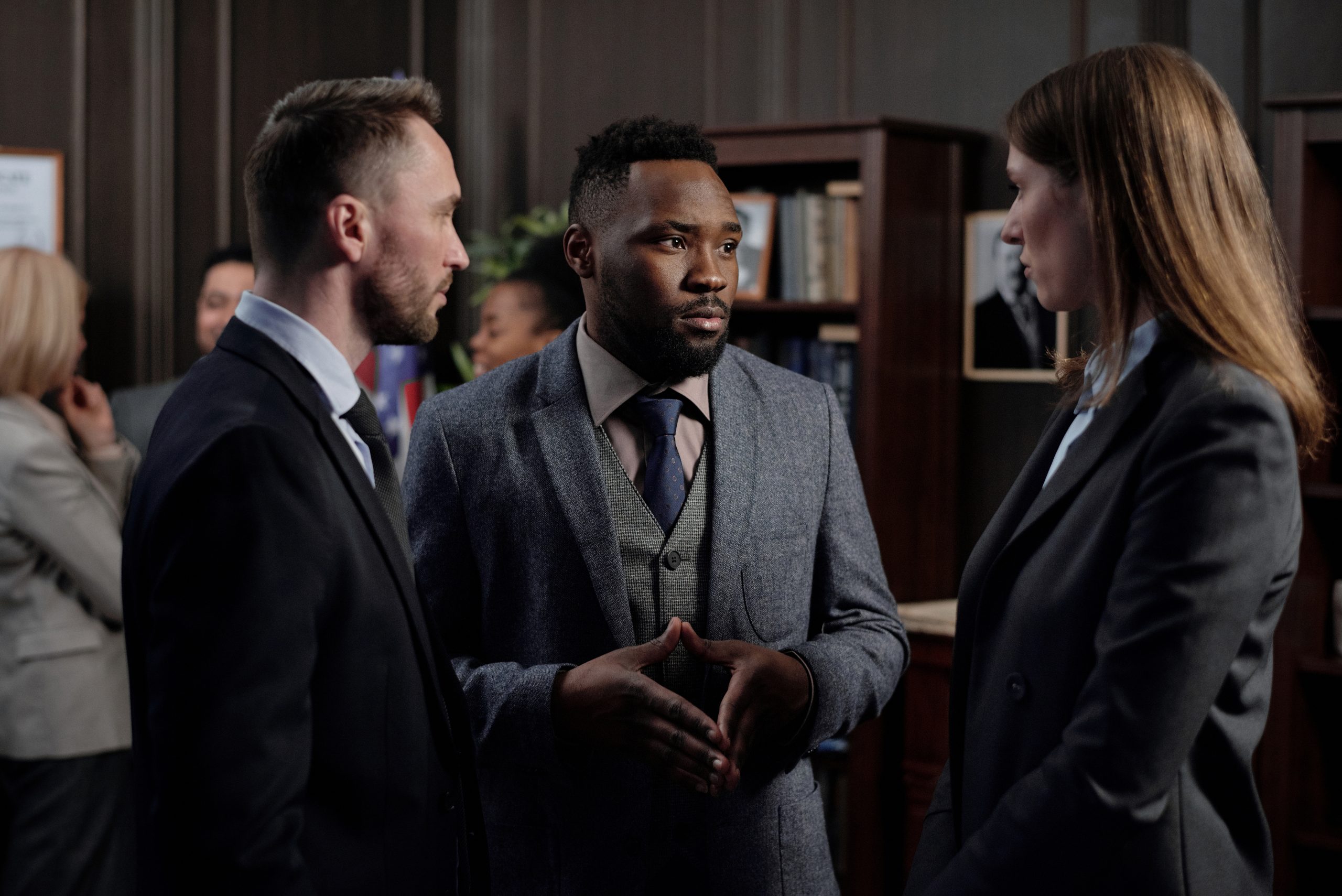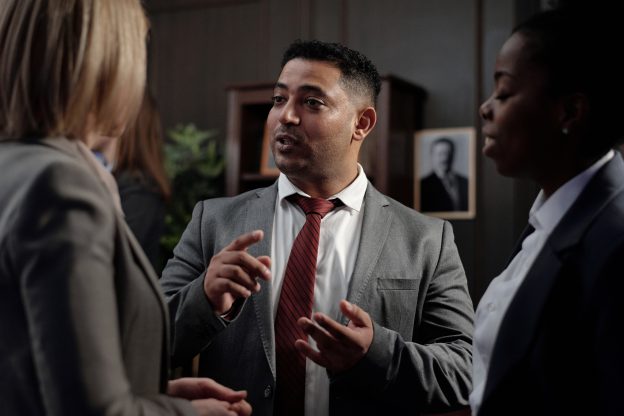In today’s complex legal landscape, understanding criminal laws is crucial for businesses and their owners. Whether it’s navigating fraud allegations, intellectual property disputes, or other criminal matters, having a knowledgeable defense attorney by your side is vital. With their expertise in this area of law, they can guide you through the intricacies of the legal process and protect your rights. In this article, we will explore the fundamentals of criminal laws, addressing common concerns and providing useful insights to aid businesses and business owners in making informed decisions. By delving into case studies and offering practical advice, we aim to demonstrate our expertise and reassure potential clients that we are the top choice for their criminal defense needs. So, if you find yourself facing criminal charges, don’t hesitate to reach out to our experienced team of attorneys listed on this website for a consultation and start building your strong defense.
Understanding Criminal Laws
Criminal laws are a crucial component of any legal system and serve to maintain order and protect individuals within society. They define the behaviors that are considered illegal and establish the consequences for violating these laws. By understanding criminal laws, individuals can navigate the legal system more effectively, both as defendants and as potential victims.
What are Criminal Laws?
Criminal laws encompass a wide range of behaviors that are deemed harmful to society and are therefore prohibited by law. These laws are based on the principles of deterrence, punishment, and rehabilitation. They establish the standards of acceptable conduct and outline the penalties for non-compliance. Criminal laws cover various types of offenses, from minor infractions to serious felonies.
Purpose of Criminal Laws
The primary purpose of criminal laws is to maintain order, protect public safety, and safeguard individual rights. By clearly defining prohibited conduct and establishing penalties, criminal laws deter individuals from engaging in criminal behavior. They also provide justice for victims by holding offenders accountable and offering a sense of closure. Additionally, criminal laws aim to rehabilitate offenders, addressing the underlying causes of criminal behavior and promoting their reintegration into society.
Types of Criminal Laws
Criminal laws can be categorized into different types, each addressing specific types of offenses:
-
Violent Crimes: These offenses involve the use or threat of force against another person. Examples include assault, murder, and robbery.
-
Property Crimes: Property crimes involve the unlawful deprivation or damage to another person’s property. Theft, burglary, and arson are examples of property crimes.
-
White Collar Crimes: White collar crimes refer to non-violent offenses committed by individuals in a professional or business setting. Examples include fraud, embezzlement, and insider trading.
-
Drug Crimes: Drug crimes involve the possession, distribution, or manufacturing of illegal substances. These offenses are governed by both federal and state laws.
-
Sex Crimes: Sex crimes encompass a broad range of offenses, including rape, sexual assault, and child exploitation. These crimes are typically treated with utmost seriousness and carry severe penalties.
-
Traffic and Motor Vehicle Crimes: These offenses involve violations of traffic laws and regulations, such as speeding, reckless driving, and driving under the influence (DUI).
-
Public Order Crimes: Public order crimes are offenses that disrupt public peace and order. Disorderly conduct, public intoxication, and prostitution are examples of public order crimes.
Elements of a Crime
For a behavior to be considered criminal, certain elements must be present. These elements are crucial for establishing the guilt of the accused and ensuring a fair and just legal process.
Actus Reus
Actus reus refers to the physical act or conduct that constitutes the crime. It encompasses the external elements of an offense, such as actions, omissions, and the specific circumstances surrounding the behavior. Actus reus helps determine whether a person has intentionally or negligently engaged in the prohibited conduct.
Mens Rea
Mens rea refers to the mental state or intent of the accused at the time of the crime. It encompasses the knowledge, intention, or recklessness of the defendant. Mens rea is essential to establish the element of culpability and differentiate between intentional crimes and accidental actions.
Causation
Causation relates to the link between the defendant’s conduct and the resulting harm or consequences. It requires establishing that the accused’s actions directly caused or contributed to the harm suffered by the victim. Causation ensures that only those who are directly responsible for a crime are held accountable.
Concurrence
Concurrence refers to the need for the accused’s criminal intent (mens rea) to coincide with their criminal act (actus reus). It ensures that individuals are held responsible only for their intentional or reckless actions rather than for mere thoughts or intentions.

Classification of Crimes
Crimes are classified into different categories based on their seriousness and the potential penalties they carry. The classification determines how these offenses are treated in the legal system and the corresponding consequences for offenders.
Felonies
Felonies are the most serious type of crimes and are typically punishable by imprisonment for more than one year. Examples of felonies include murder, rape, arson, and robbery. Convictions for felonies can have long-lasting impacts on an individual’s life, including loss of certain civil rights and difficulty finding employment.
Misdemeanors
Misdemeanors are less serious offenses compared to felonies but still carry potential jail time, although generally for less than one year. Common misdemeanor offenses include petty theft, simple assault, and DUI. While the penalties for misdemeanors are generally less severe, they can still have a significant impact on an individual’s record and personal life.
Infractions
Infractions, also known as violations or petty offenses, are the least serious type of crimes and typically involve minor offenses. Traffic violations, public intoxication, and disorderly conduct are common examples of infractions. While jail time is not typically a consequence of infractions, individuals may be subject to fines or other penalties.
Investigation and Arrest
The process of investigating and arresting individuals suspected of committing a crime is a crucial step in the criminal justice system. This process ensures that law enforcement agencies gather the necessary evidence and secure suspects for further legal proceedings.
Police Investigation
Police investigations play a critical role in collecting evidence and determining the facts surrounding a crime. This involves conducting interviews, collecting physical evidence, and analyzing any available surveillance footage. The goal of a police investigation is to gather enough evidence to establish probable cause to arrest a suspect and support a potential prosecution.
Search and Seizure
Search and seizure laws protect individuals from unreasonable searches and seizures by law enforcement. The Fourth Amendment of the United States Constitution guarantees the right to be free from unreasonable searches and requires that search warrants be issued upon probable cause. However, there are exceptions to the warrant requirement, such as when an officer has reasonable suspicion that a crime has been or is being committed.
Arrest Warrants
Arrest warrants are issued by a judge or magistrate and authorize law enforcement officers to apprehend a suspect. An arrest warrant is typically issued when there is probable cause to believe that the person has committed a crime. Law enforcement officers must have an arrest warrant in their possession when making an arrest, unless certain exceptions apply.

Pretrial Process
The pretrial process begins after an arrest and involves several key stages before the trial itself, including the defendant’s initial appearance, bail and bond, preliminary hearings, and grand jury proceedings.
Initial Appearance
The initial appearance is the defendant’s first appearance before a judge following their arrest. At this stage, the judge informs the defendant of their rights, including the right to an attorney, and sets bail if necessary. The defendant may also enter a plea of guilty or not guilty during the initial appearance.
Bail and Bond
Bail and bond refer to the financial arrangements that allow a defendant to remain out of custody before their trial. Bail is the amount of money set by the court to ensure the defendant’s appearance at subsequent court proceedings. A bond is a type of surety or insurance purchased from a bail bondsman to secure the defendant’s release.
Preliminary Hearing
A preliminary hearing, also known as a probable cause hearing, determines whether there is sufficient evidence to proceed to trial. During this hearing, the prosecution presents evidence, and the defense has an opportunity to challenge it. If the judge finds probable cause, the case will be bound over for trial.
Grand Jury
A grand jury is a group of citizens convened to determine whether there is enough evidence to bring formal charges against a defendant. The grand jury process is typically used in felony cases. If the grand jury decides there is probable cause, they will issue an indictment, and the defendant will proceed to trial.
The Criminal Trial
The criminal trial is the stage at which the prosecution and defense present their cases to a judge or jury. This process involves various key components, including jury selection, opening statements, witness testimony, cross-examination, closing arguments, jury deliberation, and the rendering of a verdict.
Jury Selection
Jury selection, also known as voir dire, is the process of choosing a jury panel from a group of potential jurors. Attorneys for both the prosecution and the defense have the opportunity to question potential jurors to ensure a fair and impartial jury. This process aims to select jurors who can objectively evaluate the evidence presented during the trial.
Opening Statements
During the opening statements, both the prosecution and the defense provide an overview of their case to the jury. The attorneys outline the evidence they intend to present and the arguments they will make to support their respective positions. Opening statements help lay the foundation for the trial and provide a guide for the jury regarding what to expect throughout the proceedings.
Witness Testimony
Witness testimony is a crucial component of any trial. Witnesses, both expert and laypersons, provide evidence and firsthand accounts of the events in question. The prosecution and defense have the opportunity to question and cross-examine witnesses to establish the credibility of their testimony and to highlight any inconsistencies or biases.
Cross-Examination
Cross-examination is the process by which an opposing attorney questions a witness who has provided testimony for the other side. The purpose of cross-examination is to elicit additional information, challenge the credibility of the witness, or expose any inconsistencies or biases in their testimony. The effectiveness of cross-examination can heavily influence the jury’s perception of the witness and the overall case.
Closing Arguments
Closing arguments are the final opportunity for the attorneys to present their case to the jury. They summarize the evidence, highlight key points, and make persuasive arguments to support their positions. In closing arguments, attorneys often try to appeal to the emotions and reasoning of the jurors, urging them to render a verdict in favor of their client.
Jury Deliberation
After closing arguments, the jury will deliberate in a separate room to reach a verdict. During deliberations, the jurors review the evidence, consider the arguments presented by both sides, and engage in discussions to reach a unanimous decision. Once the jury has reached a verdict, they will inform the court, and the trial moves to the next stage.
Verdict
The verdict is the decision reached by the jury regarding the guilt or innocence of the defendant. The jury’s verdict must be unanimous in most criminal cases. If the defendant is found guilty, the judge will schedule a sentencing hearing, where the punishment for the crime will be determined.
Sentencing and Punishment
The sentencing and punishment phase occurs following a guilty verdict or a plea of guilty. During this stage, the judge considers various factors in determining an appropriate sentence. The goal of sentencing is to impose a punishment that is proportionate to the crime committed, while also taking into account the needs of the victim and the potential for rehabilitation.
Sentencing Factors
Judges consider multiple factors when determining a sentence, including the nature and severity of the crime, the defendant’s criminal history, the impact on the victim and society, and any mitigating or aggravating circumstances. Sentencing factors vary depending on the jurisdiction and the specific laws applicable to the case.
Types of Punishment
Punishments for criminal offenses can include fines, probation, incarceration, and restitution. The severity of the punishment depends on the nature of the crime and the applicable laws in the jurisdiction.
Probation
Probation is a type of supervision and alternative to incarceration. It allows a convicted offender to remain in the community under certain conditions while being monitored by a probation officer. Conditions of probation often include regular check-ins, drug testing, and adherence to specific restrictions or requirements.
Incarceration
Incarceration involves the confinement of convicted offenders in correctional facilities such as prisons or jails. The length of incarceration depends on the severity of the crime and can range from a few days to life imprisonment or even the death penalty in certain jurisdictions.
Fines
Fines are monetary penalties imposed as punishment for criminal offenses. The amount of the fine depends on the severity of the crime and the applicable laws. Fines serve as a deterrent and can also provide restitution to victims or fund victim services.
Restitution
Restitution is a form of compensation awarded to the victim to reimburse them for any losses or damages suffered as a result of the crime. These may include medical expenses, property damage, or lost wages. The court orders the convicted offender to pay restitution as part of their sentence.
Appeals and Post-Conviction Relief
After a conviction, the defendant may have the right to appeal the decision or seek post-conviction relief. These processes allow the defendant to challenge the conviction or sentence based on specific legal grounds.
Grounds for Appeal
Grounds for appeal can include errors made during the trial, such as violations of constitutional rights, improper jury instructions, or new evidence that was not previously available.
Appellate Process
The appellate process involves reviewing the trial court’s decisions for legal errors rather than reevaluating the facts of the case. The appellate court does not retry the case or consider new evidence but instead focuses on the legal arguments presented by both parties.
Post-Conviction Relief
Post-conviction relief provides a mechanism for challenging a conviction or sentence based on claims of ineffective assistance of counsel, newly discovered evidence, or constitutional violations. Post-conviction relief procedures vary depending on the jurisdiction, but they generally require filing a petition with the court outlining the grounds for relief.

Criminal Defense Strategies
Defendants facing criminal charges have the right to mount a defense against the accusations. A skilled criminal defense attorney will employ various strategies tailored to the specific facts and circumstances of the case.
Presumption of Innocence
The presumption of innocence is a fundamental principle of criminal law. It states that a defendant is presumed innocent until proven guilty beyond a reasonable doubt. Defense attorneys emphasize this presumption and challenge the prosecution’s burden of proof throughout the trial.
Challenging Evidence
Defense attorneys scrutinize the evidence presented by the prosecution, challenging its admissibility and credibility. They may question the methods used to collect and analyze evidence, challenge the reliability of witness testimony, or seek to suppress evidence obtained in violation of the defendant’s constitutional rights.
Affirmative Defenses
Affirmative defenses provide a legal justification or explanation for the defendant’s actions, even if the act itself is technically a crime. Examples of affirmative defenses include self-defense, necessity, and duress. By presenting affirmative defenses, defense attorneys seek to establish that the defendant’s actions were justified or excused.
Alibi Defense
An alibi defense asserts that the defendant was not present at the scene of the crime when it occurred. This defense relies on establishing a verifiable and credible alibi through witnesses, surveillance footage, or other forms of evidence that can place the defendant elsewhere at the time of the offense.
Mistake of Fact
Mistake of fact is a defense that asserts that the defendant made an honest and reasonable mistake about a key fact that negates their criminal intent. For example, if the defendant reasonably believed they had permission to use another person’s property, they may argue that their actions were not criminal because of their mistaken belief.
FAQs about Criminal Laws
Q: What is the difference between a felony and a misdemeanor?
A: The main difference between a felony and a misdemeanor lies in the severity of the offense and the potential penalties. Felonies are more serious crimes and carry potential imprisonment for more than one year, whereas misdemeanors are less serious offenses and typically carry potential jail time of less than one year.
Q: What happens during a police investigation?
A: During a police investigation, law enforcement officers gather evidence, interview witnesses, collect physical evidence, analyze forensic evidence, and pursue leads to determine the facts surrounding a crime. The goal is to gather sufficient evidence to support a potential prosecution and ensure a fair trial.
Q: Can I be arrested without a warrant?
A: In certain circumstances, individuals can be arrested without a warrant if a law enforcement officer has probable cause to believe that a crime has been or is being committed. However, the general rule is that a warrant is required for an arrest unless certain exceptions apply.
Q: What factors are considered during sentencing?
A: Factors considered during sentencing vary depending on the jurisdiction and the specific laws applicable to the case. Common factors include the nature and severity of the crime, the defendant’s criminal history, the impact on the victim and society, and any mitigating or aggravating circumstances.
Q: How long does the appeals process take?
A: The length of the appeals process can vary significantly depending on the jurisdiction, the complexity of the case, and the workload of the appellate court. Appeals can take several months to several years to complete, and it is essential to consult with an experienced attorney to understand the specific timeline for a particular case.



